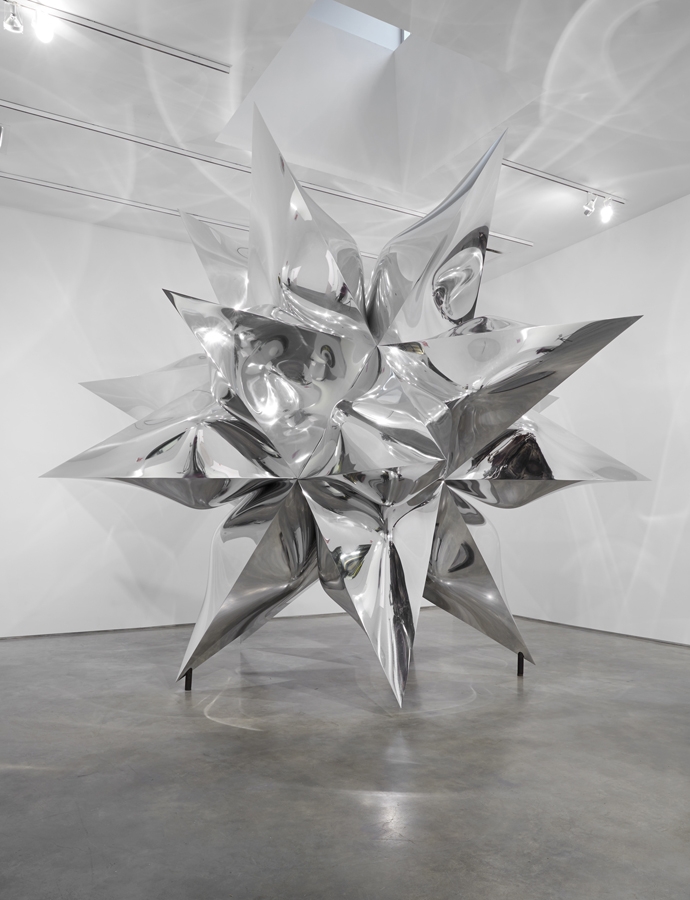What should we make of Puffed Star II (2014)? Well, for one, it’s big: almost six metres high and wide. It’s shiny too: pure polished aluminium. And it’s regularly geometric: a 20-pointed, equal-sided star with protuberant – ‘puffed’ – planes. If it hadn’t been made by Frank Stella, one could be forgiven for thinking that Jeff Koons had turned his attention to Christmas-tree decorations. That might be good for Koons, but it’s not for Stella. In all fairness to Jeff, he would never allow chipped tips or misaligned facets to make it into the public eye (Puffed Star has both). In all fairness to Frank, he likely could care less; merchandise has never been his thing.
But then what is his thing here? Puffed Star II is juxtaposed with a similarly sized work from nearly 20 years ago, Fishkill (1995), whose geometries are as far from regular as one might get. A car wreck of cast stainless steel, Fishkill shows how Stella embraced digital modelling and manufacture early, but only as part of a sustained attack on the formal coherence that had dictated his earliest painting series and which Puffed Star II resumes.
The tension between regular geometries and irregularity is taken up more singularly in K.150 (2014), a ‘tabletop’ sculpture of digitally printed ABS, a thermoplastic that is a staple of the rapid-prototyping industry. K.150 delights in the sectioning and intersectioning of regular three-dimensional forms: Stella’s newfound star form is present, twice, one in Irish green and the other in cyan. Both have been sliced by the digital knife and merged with a series of circular springs, apparently a favourite form for CAD jockeys in training. All of this is held up by a folded, polka-dotted plane, which returns the work, at least rhetorically, to the problem of relief, with which Stella has contended in one form or another for decades. As if to push the point home, K.150 is placed next to Creutzwald (1992), a duo of earlier mangled steel constructions, one compact, the other winglike, situated on a low base.
These pairings are unsubtle to say the least, but that’s a complaint about curating, about the logic of selection, not the logic of the work. Stella deserves the benefit of the doubt when it comes to the new pieces, and here the comparisons to the earlier work are helpful, at least as heuristics. Because what the new works speak to is the kind of techno-utopia that has largely been confined to screens, both film and computer, but which is coming to the civilian sphere in the form of MakerBot and other 3D printers, the capacities of which K.150 is just an advanced example. If the historical works in this show speak to the apocalyptic obdurateness of heavy metal, then Puffed Star II and K.150 speak to the formal promiscuity of our plastic future, which will be big on shape, but lack weight, let alone substance. The works are there, and yet their being there, or here – their being at all – seems inconsequential. That, this, is what the world of 3D printing promises, and Stella has been ahead of his time before.
This article was first published in the January & February 2015 issue.
